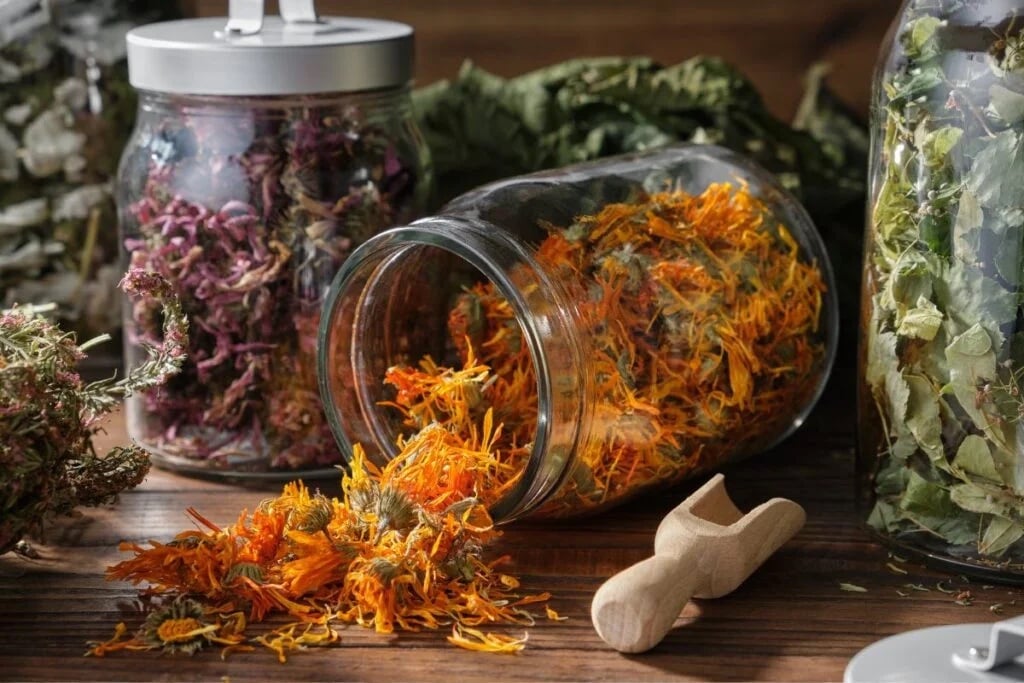The bark of a tree is not only the plant’s clothing and lifeblood. It can also be a source of life for humans. In folk medicine, tree bark teas have been used to treat various diseases since ancient times. One of the most famous tree bark beverages is Pau D’arco tea, also called Taheebo tea. However, this type of treatment requires care. First, you should know how to collect and prepare the bark properly. It is essential to consume the bark tea properly. Tree bark can heal, but it can also harm. We will introduce you to the Pau D’arco tea benefits and their side effects.
Lapacho, Taheebo, or Pau D’arco
One of the most popular products made from tree bark is the Pau D’arco (Handroanthus impetiginosus). This tree’s bark is a material for lapacho or teheebo tea, available in pharmacies and other specialized outlets. Many people probably know that Pau D’arco tea strengthens immunity, prevents colds, and provides health benefits.
There are available extracts from the Pau D’arco tree bark in capsule form. Handroanthus impetiginosus tree is native to South and Central America, there it has the names pink trumpet tree, pink lapacho, or pink ipê (syn. Tabebuia impetiginosa, Tabebuia avellanedeae).
Handroanthus impetiginosus is an evergreen plant that can grow up to 30 meters tall. It has pink flowers clustered at the top of a branched tree. Although more than 100 species of this genus are known, only a few are valued for their health benefits.
In Latin-speaking countries, the tea from this plant is called lapacho or taheebo.

Taheebo Tea Benefits
The bark of the Pau D’arco tree contains substances beneficial to human health. Several compounds called naphthoquinones (mainly beta-lapachone and lapachol) isolated from the inner bark of the pink trumpet tree are responsible for Pau D’arco tea benefits.
- Treats chronic constipation. Regular use of tree bark preparations normalizes the rhythm of bowel movements.
- It acts as a natural antibiotic.
- The substances fight free radicals and have anti-aging properties.
- It strengthens immunity and prevents colds.
- It helps treat chronic diseases, like lupus, psoriasis, and Parkinson’s.
- The tea eases the side effects of medicines.
Pau D’arco Tea
It may not be easy to find material for taheebo tea as it is not popular in some countries markets. But you can find Pau D’arco bark extract in capsules. The effectiveness of the extract surpasses that of taheebo tea. These pills have more beneficial compounds than Pau D’arco bark tea because of alcohol extraction. In contrast, these compounds are much milder in water.
Lapacho tea is popular in South America. It is often referred to as ‘Inca tea’; ancient people prepared it for thousands of years. Each region of South America has its own way of preparing Lapacho tea.
Traditionally, this tea is prepared according to the following instructions:
- Pour 1 liter of boiling water on 2-3 teaspoons of dried tree bark and steep for 15 minutes. Take the tea 3 times a day.
- You may also make the tea concentrate by boiling the bark. Use 2 teaspoons of bark per 1 liter of water. Cover the bark with water and boil it over low heat for 10 minutes. Then, soak for about half an hour. Store this decoction in the fridge and consume it within a few days.

Side Effects of Pau D’arco Tea and Preparations
Pau d’arco tea is commonly used as a beverage for prophylactic purposes during the cold season to prevent colds and viral diseases. Recommendations suggest drinking a cup of taheebo tea each morning and evening. While taking the extract, follow the manufacturer’s recommendations or consult your doctor.
Pregnant and nursing women, as well as people taking blood thinners, should avoid using Taheebo tea and preparations.
Nausea, vomiting, and discoloration of urine may occur in people who are sensitive to this preparation or in cases of overdose. In rare cases, anthill bark may provoke anemia and impair reproductive health.
Sources:
- https://medlineplus.gov/druginfo/natural/647.html
- https://www.healthline.com/nutrition/pau-d-arco
- https://healthfree.com/herb_lapacho.html
- https://www.nutriplanet.org/2014/03/10-reasons-to-drink-lapacho-tea/
Research:
- https://pubmed.ncbi.nlm.nih.gov/22431070/
- https://pubmed.ncbi.nlm.nih.gov/26703544/
- https://pubmed.ncbi.nlm.nih.gov/19578798/
- https://pubmed.ncbi.nlm.nih.gov/22436096/
Associative photos from © Canva.

